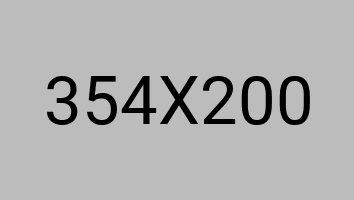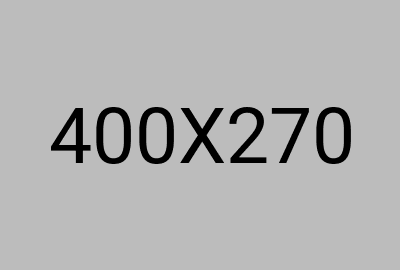Overview of STAAD Pro Course
Structural design plays a critical role in the safety and durability of modern constructions. The STAAD Pro Course offers comprehensive training on one of the most widely used structural analysis tools in the industry.
Participants will master techniques for designing structural components like beams, columns, and trusses while considering real-world constraints such as wind loads, seismic activity, and material properties. This course is tailored to equip engineers with the confidence and skills to handle complex structural projects independently.
Key Features of STAAD Pro Training
- Interactive Learning: Hands-on training with real-world project simulations.
- Software Proficiency: In-depth knowledge of STAAD Pro and other relevant tools.
- Industry Alignment: Course modules are designed to align with Abu Dhabi's construction standards.
Why Choose STAAD Pro Training?
STAAD Pro is a versatile software tool that caters to structural engineers specializing in steel and RCC designs. Whether you’re looking to enhance your skills or transition into specialized roles, this course is a must for ambitious professionals.
STAAD Pro Steel Design Course Syllabus
Importance of STAAD Pro Certification
STAAD Pro certification is a benchmark of proficiency in structural analysis and design. In Abu Dhabi, where infrastructure projects are thriving, this certification can significantly boost your career prospects.
Why STAAD Pro Certification Matters
- Validates Expertise: Validates your expertise in advanced structural engineering.
- Enhances Employability: Enhances employability with top construction firms.
- Meets Standards: Equips you to meet regional and international design standards.
This certification not only elevates your resume but also assures clients and employers of your competence in managing complex projects.
Why Learn STAAD Pro Certification Course?
STAAD Pro has become an essential tool for structural engineers globally. Here’s why you should enroll:
Benefits of STAAD Pro Training
- Master Structural Analysis: Handle large-scale projects with confidence.
- Enhance Productivity: Reduce manual effort with automated calculations.
- Stay Industry Relevant: Stay updated with the latest trends in structural design.
Key Takeaways from Training
- Precision Design: Develop precision in designing safe and sustainable structures.
- Integration Skills: Learn to integrate STAAD Pro with tools like AutoCAD and BIM.
- Hands-on Experience: Gain hands-on experience with real-world projects.
Demand for Skilled STAAD Pro Professionals
The rapid urbanization in Abu Dhabi has fueled the demand for professionals skilled in STAAD Pro software.
Why the Demand?
- Infrastructure Projects: Rising number of mega infrastructure projects.
- Sustainability Focus: Increased focus on sustainable and earthquake-resistant designs.
- Efficiency Needs: Need for efficiency in resource and material optimization.
Industries Hiring STAAD Pro Experts
- Construction Companies: High-rise buildings and bridges.
- Engineering Consultancies: Structural audits and safety evaluations.
- Oil and Gas Sector: Design of onshore and offshore structures.
STAAD Pro Structural Design Training Outcome
Key Skills Gained
> Mastery of REVIT Structure tools and techniques for structural modeling.
> Ability to integrate structural designs with other building systems using BIM.
Software Proficiency
> Full proficiency in Autodesk REVIT Structure for creating complex structural models.
> Understanding of how to collaborate and manage BIM data across different disciplines.
Career Advancements
> Opportunities to become a BIM Manager, Structural Engineer, or Project Lead in large construction projects.
> Increased employability in high-profile architectural firms and government projects.
Who Can Enroll in STAAD Pro Certification
- Structural Engineers: Aiming to upgrade their skills.
- Civil Engineers: Specializing in design and analysis.
- Fresh Graduates: Seeking advanced training in structural software.
- Professionals Transitioning: To structural design roles.
Career Prospects After STAAD Pro Training
- Structural Engineer: Design and analyze building frameworks.
- Project Consultant: Provide expertise in structural audits.
- Steel Design Specialist: Focus on steel structures for industrial projects.
- BIM Coordinator: Integrate STAAD Pro designs with BIM workflows.
Why Choose Our Institute for STAAD Pro Training
- Experienced Trainers: Learn from certified professionals with industry experience.
- Comprehensive Curriculum: Tailored for Abu Dhabi’s construction standards.
- State-of-the-Art Facilities: Access advanced tools and technology.
- Placement Assistance: Connect with leading firms for job opportunities.
Available Training Options
- Classroom Training: Interactive sessions with experienced trainers.
- Online Training: Flexible learning for working professionals.
Faq
You’ll become proficient in STAAD Pro for structural analysis, load calculations, and designing compliant structures.
Software Training Areas: Analyzing multi-story buildings, Applying loads and supports
Yes, practical projects like analyzing building frames, bridges, and trusses are included for hands-on experience.
Examples: Earthquake-resistant building design, Steel frame load distribution
Participants earn a STAAD Pro certification that validates their expertise in structural analysis and design.
Certification Benefits: Enhances job opportunities, Industry-wide recognition
Yes, the course covers design and analysis for steel, RCC, and composite structures.
Material-Specific Modules: Reinforced concrete design, Steel frame optimization
The course duration typically ranges from 6 to 10 weeks, depending on the depth of the curriculum.
Learning Modes: Full-time or part-time options
Industries like construction, infrastructure, and oil & gas use STAAD Pro for structural integrity analysis.
Applicable Projects: Bridges and highways, Industrial sheds
Yes, compliance with international and regional building codes is emphasized throughout the course.
Code Standards: AISC, IS codes, and Eurocodes
Yes, detailed modules cover wind, seismic, and dead load analysis to ensure structure safety.
Load Analysis Techniques: Lateral force evaluation, Foundation stability checks
Yes, advanced topics like dynamic analysis, modal frequency, and time history analysis are included.
Advanced Features: Analyzing vibration impacts, Stability during earthquakes
Yes, real-world examples of residential, commercial, and industrial projects are discussed to enhance learning.
Case Study Examples: High-rise building analysis, Bridge structure optimization
While some prior knowledge of structural engineering is helpful, beginners can start with introductory modules.
Support for Beginners: Basic structural principles, Guided tutorials
Yes, steel structure analysis and design, including connections and load paths, are key modules.
Steel Focus Areas: Beam and column design, Truss stability analysis
Yes, you’ll learn to analyze and design reinforced concrete components like slabs, beams, and columns.
RCC Modules: Load-bearing capacity, Crack width calculation
Graduates can work as structural designers, civil engineers, and consultants in infrastructure and construction industries.
Potential Roles: Project engineer, Structural consultant
Yes, 3D modeling for structures is integrated into the curriculum for enhanced visualization and design accuracy.
3D Features: Model creation and rendering, Applying real-time loads
You’ll work on projects like multi-story buildings, industrial facilities, and bridges to apply learned concepts.
Project Examples: Factory floor stability, Cantilever structure analysis
Yes, the course emphasizes cost-effective design by optimizing material usage and structure weight.
Optimization Techniques: Weight reduction methods, Economical material selection
STAAD Pro simplifies structural analysis, improves accuracy, and ensures compliance with safety standards, making it indispensable for modern engineering projects.
Relevance Highlights: Reduced project errors, Improved design efficiency
Book Your Seat Now!
Our New Batch Starts On Every Week In a Month






